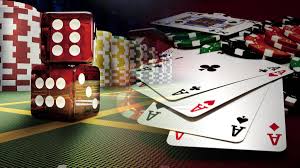If you’ve ever come across whispers about the Matka game in conversations, movies, or old newspapers, you're probably aware that it's no ordinary number game. Deeply rooted in Indian culture and history, the Matka game has evolved from a traditional lottery to a popular—though controversial—form of betting that still captures attention today.
But what exactly is the Matka game, and why does it continue to have a following despite legal crackdowns and modernization? Let’s break it down for a social audience curious about its mysterious charm.
The Origins: From Pots to Profits
The term "Matka" literally means "earthen pot" in Hindi. Back in the 1960s, the Matka game began as a lottery where numbers were drawn from a pot. Initially, the bets were placed on the opening and closing rates of cotton transmitted to the Bombay Cotton Exchange from the New York Cotton Exchange.
When this practice was banned, punters adapted. They started writing random numbers on chits and drawing them from a matka (pot), hence the name. Over time, the format changed, but the name—and the addiction—remained.
How the Matka Game Works Today
The modern version of the Matka game is relatively simple in concept but complex in strategy. Players choose a set of three numbers from 0 to 9. These numbers are added up, and the last digit of the sum becomes the fourth number in the set.
For example, if a player picks 3, 5, and 7, the sum is 15, so the final pick becomes 5. The bet is placed on this set, and if the result matches the winning number declared by the organizers, the player wins multiple times their original bet.
However, since it’s not a regulated game, results can be manipulated, and fairness isn’t always guaranteed.
The Social Side of the Matka Game
Despite its underground status, the Matka game has developed a sort of cult following. It's been glamorized in Bollywood films and even referenced in pop culture. For some, it’s a nostalgic connection to a bygone era. For others, it’s a social ritual—a way to engage with friends or local communities.
Unfortunately, it also has a darker side. The Matka game has led many into financial ruin, especially in lower-income groups. Because it’s based on chance, losses are far more frequent than wins, and the promise of “easy money” often turns into a vicious cycle of debt and desperation.
Why Does It Still Survive?
You’d think that with the rise of online gaming and strict regulations, the Matka game would have faded into obscurity. But the opposite is true. Today, the game thrives online through various websites and mobile apps—though most operate in a legal grey zone.
The reason for its survival? It’s accessible, doesn’t require high entry costs, and offers the thrill of instant results. It’s also deeply ingrained in certain communities where it's seen as a local tradition more than a criminal activity.
The Legal Landscape
The Matka game is illegal in most parts of India. But that hasn’t stopped operators from running it in the shadows or taking it online. While authorities crack down on physical betting dens, cyber Matka continues to flourish, often rebranding itself under different names.
The law is often a step behind technology, making it difficult to track down and shut these platforms. Moreover, enforcement varies by region, which allows the game to stay under the radar in many places.
Final Thoughts: A Risky Tradition
The Matka game sits at a curious intersection of tradition, thrill, and risk. It’s more than just a number game—it’s a reflection of societal dynamics, economic aspirations, and the timeless allure of luck.
Whether you view it as a cultural relic or a dangerous vice, one thing is certain: the Matka game isn’t disappearing anytime soon. It continues to evolve, adapt, and engage a dedicated following—online and off.
So the next time you hear about the Matka game, you’ll know it’s more than just drawing numbers. It’s a story of survival in the face of changing laws, technologies, and times.
